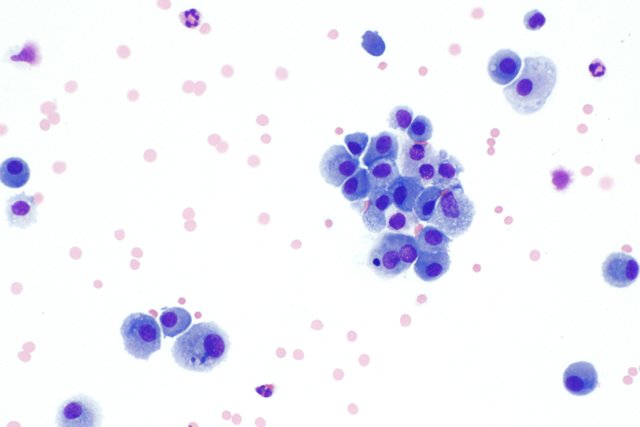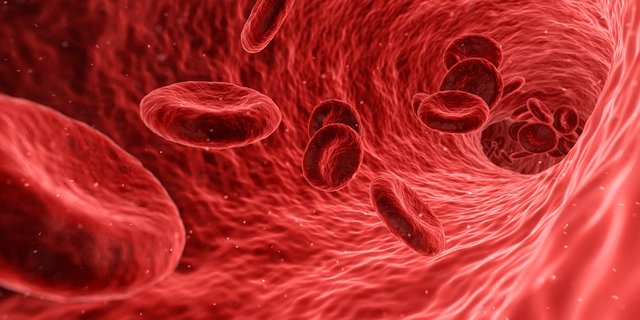Much more than macrophages
Much more than macrophages
Much effort today is devoted in directing cell fate towards therapeutically useful phenotypes. The more we learn about it and the more we realize that sometime our body can already deploy some neat tricks that are hard to beat. Generally, we try to increase the inherent regenerative capacity of our body to accelerate wound healing. We seem so obsessed with stem cells that sometimes we fail to consider other mechanisms that could be used to achieve the same results, one of these is transdifferentiation. This phenomenon occurs when one mature cell can be reprogrammed into another cell type without undergoing the pluripotent state (Jopling, Boue, and Belmonte 2011). This phenomenon is much more diffused than we think and usually it’s part of the physiological healing mechanism that uses injury to trigger plasticity of cells (Bielefeld, Amini-Nik, and Alman 2013; Jessen, Mirsky, and Arthur-Farraj 2015). It’s true that stem cells are resident in many tissues in so called niches. However, if we were relying solely on stem cells, we would not be able to cope with so many injuries.
It was recently shown that macrophages do much more than mounting inflammatory responses, they can also differentiate in several cell types: from endothelial cells (Bailey and Willenbring 2006) to adipocytes (Majka et al. 2010) and today we know they can even become fibroblasts (Sinha et al. 2018).

Image CCO Creative Commons

Image CCO Creative Commons
If you think about it it’s a brilliant strategy, these myeloid cells are among the first cells to show up at the site of injury, usually their primary role is that of orchestrating the inflammatory response, so why not use them as a source of cells that can contribute in the repair of a tissue? Afterall we still have no idea about what happens to the macrophages after the inflammation is resolved, some speculates that the macrophages could egress back to the lymphatic system (Randolph 2008), or that they simply die (Randolph 2014). A much more interesting and proven phenomenon is that macrophages can undergo a phenotypic switch when it’s time to repair the damaged tissue (Mosser and Edwards 2008). Generally, there are two phenotypes the pro-inflammatory M1 o the pro-healing M2 (Sica and Mantovani 2012). Scientists compare these two phenotypes a bit like the Dr. Jekyll and Mr. Hyde of macrophages. The problem is that is not exactly clear how to get from one phenotype to the other. What we know is that the behavior of macrophages can determine the outcome of the tissue regeneration.

Image CCO Creative Commons
Probably considering just the M1 and M2 phenotype is a bit reductive and for sure it’s not the full story. Macrophages may be so difficult to understand because they probably transdifferentiate in several different other cell types. Something very interesting that was found recently was that there is a substantial crosstalk between keratinocytes and macrophages. The keratinocytes can secrete miR-21 in extracellular vesicles that cause the conversion of macrophages to fibroblasts (Sinha et al. 2018). Having plenty of fibroblasts in a wound site is not always a good thing because these are often associated with the formation of scar tissue. However, the fibroblasts derived by the macrophage conversion secrete abundant amount of metalloproteinases-12 which are found to enable the remodeling of the wound and contribute towards a better resolution of the injury (Bonnans, Chou, and Werb 2014).
Interestingly it was found that in diabetic patients, the secretion of miR-21 from keratinocytes is compromised. This would explain why in patients with diabetes there is a much lower conversion of macrophages towards fibroblasts and a lower regenerative capacity of the wounds (Sinha et al. 2018).
There is a revived interest in immunology, this is strengthened by the realization that that there is a straight link between innate immunity and cell plasticity, our immune system is much more than a defense mechanism. A better understanding on how it works will enable us to learn more about tissue regeneration.

Image CCO Creative Commons
References
Bailey, AS, and Holger Willenbring. 2006. “Myeloid Lineage Progenitors Give Rise to Vascular Endothelium.” Proceedings of the … 103(35): 13156–61. http://www.pnas.org/content/103/35/13156.short.
Bielefeld, Kirsten A., Saeid Amini-Nik, and Benjamin A. Alman. 2013. “Cutaneous Wound Healing: Recruiting Developmental Pathways for Regeneration.” Cellular and Molecular Life Sciences 70(12): 2059–81.
Bonnans, Caroline, Jonathan Chou, and Zena Werb. 2014. “Remodelling the Extracellular Matrix in Development and Disease.” Nature reviews. Molecular cell biology 15(12): 786–801. http://www.ncbi.nlm.nih.gov/pubmed/25415508.
Jessen, Kristjan R., Rhona Mirsky, and Peter Arthur-Farraj. 2015. “The Role of Cell Plasticity in Tissue Repair: Adaptive Cellular Reprogramming.” Developmental Cell 34(6): 613–20. http://dx.doi.org/10.1016/j.devcel.2015.09.005.
Jopling, Chris, Stephanie Boue, and Juan Carlos Izpisua Belmonte. 2011. “Dedifferentiation, Transdifferentiation and Reprogramming: Three Routes to Regeneration.” Nature Reviews Molecular Cell Biology 12(2): 79–89. http://dx.doi.org/10.1038/nrm3043.
Majka, Susan M et al. 2010. “De Novo Generation of White Adipocytes from the Myeloid Lineage via Mesenchymal Intermediates Is Age, Adipose Depot, and Gender Specific.” Proceedings of the National Academy of Sciences of the United States of America 107(33): 14781–86. http://www.ncbi.nlm.nih.gov/pubmed/20679227.
Mosser, David M, and Justin P Edwards. 2008. “Exploring the Full Spectrum of Macrophage Activation.” Nature reviews. Immunology 8(12): 958–69. http://www.ncbi.nlm.nih.gov/pubmed/19029990.
Randolph, Gwendalyn J. 2008. “Emigration of Monocyte-Derived Cells to Lymph Nodes during Resolution of Inflammation and Its Failure in Atherosclerosis.” Current opinion in lipidology 19(5): 462–68. http://www.ncbi.nlm.nih.gov/pubmed/18769227.
Randolph, G. 2014. “Mechanisms That Regulate Macrophage Burden in Atherosclerosis.” Circulation research 114(11): 1757–71. http://www.ncbi.nlm.nih.gov/pubmed/24855200.
Sica, Antonio, and Alberto Mantovani. 2012. “Macrophage Plasticity and Polarization: In Vivo Veritas.” The Journal of clinical investigation 122(3): 787–95. http://www.ncbi.nlm.nih.gov/pubmed/22378047.
Sinha, Mithun et al. 2018. “Direct Conversion of Injury-Site Myeloid Cells to Fibroblast-like Cells of Granulation Tissue.” Nature Communications 9(1): 1–19. http://dx.doi.org/10.1038/s41467-018-03208-w.
Communities that support me are:

Image created by @gtg

IMMAGINE CC0 CREATIVE COMMONS, si ringrazia @mrazura per il logo ITASTEM. Click here and vote for @davinci.witness
I think it's pretty interesting. There were previous reports from Michael Karin and David Brenner lab that found FSP1, F4/80 double positive cells in a model of liver injury. However, they reported that these cells do not show do not show the expression of alpha-SMA. Moreover in their study these cells were different from col1a producing cells. What is really interesting about this study is that these cells are actually turning on col1a expression. Which would definitely be a classic fibroblast like cell. It would however be inresting to see if PDGFRa driven CRE in wound condition can also show F4/80 expression. Or maybe I missed that while skimming through the paper.
Seriously cool science!
Scientific hypes... Antiox, stem cells...
Thanks :)
Agreed. And the major problem is that one may be too focused to consider other potentially better ways. That is true for all fields.
This post has been voted on by the SteemSTEM curation team and voting trail in collaboration with @utopian-io.
If you appreciate the work we are doing then consider voting both projects for witness by selecting stem.witness and utopian-io!
For additional information please join us on the SteemSTEM discord and to get to know the rest of the community!
Hi @aboutcoolscience!
Your post was upvoted by Utopian.io in cooperation with @steemstem - supporting knowledge, innovation and technological advancement on the Steem Blockchain.
Contribute to Open Source with utopian.io
Learn how to contribute on our website and join the new open source economy.
Want to chat? Join the Utopian Community on Discord https://discord.gg/h52nFrV
Hi @aboutcoolscience!
Your post was upvoted by @steem-ua, new Steem dApp, using UserAuthority for algorithmic post curation!
Your UA account score is currently 4.373 which ranks you at #2263 across all Steem accounts.
Your rank has dropped 44 places in the last three days (old rank 2219).
In our last Algorithmic Curation Round, consisting of 255 contributions, your post is ranked at #96.
Evaluation of your UA score:
Feel free to join our @steem-ua Discord server
Congratulations @aboutcoolscience! You have completed the following achievement on the Steem blockchain and have been rewarded with new badge(s) :
Click here to view your Board of Honor
If you no longer want to receive notifications, reply to this comment with the word
STOPCongratulations @aboutcoolscience! You have completed the following achievement on the Steem blockchain and have been rewarded with new badge(s) :
Click here to view your Board of Honor
If you no longer want to receive notifications, reply to this comment with the word
STOPDo not miss the last post from @steemitboard: